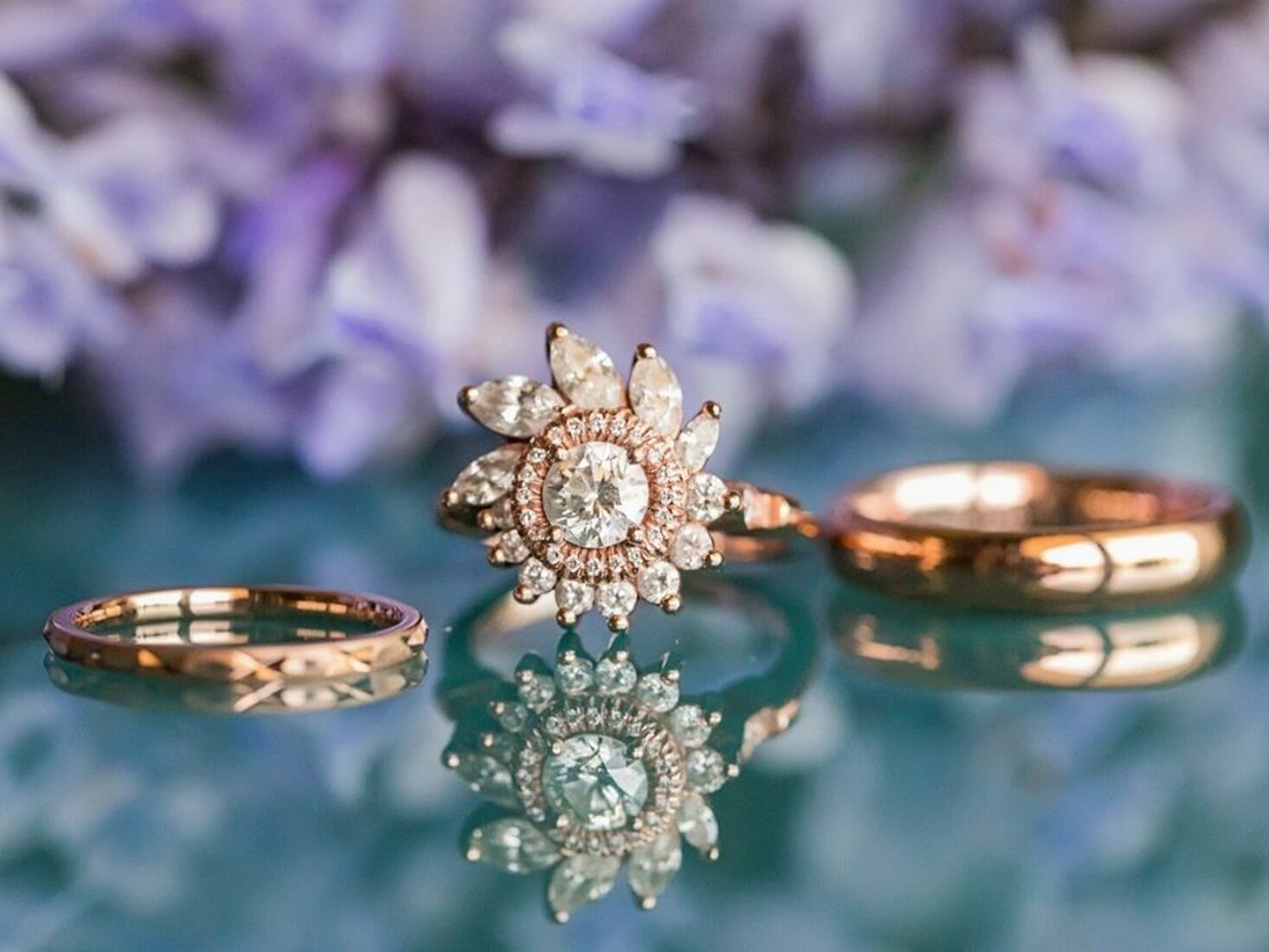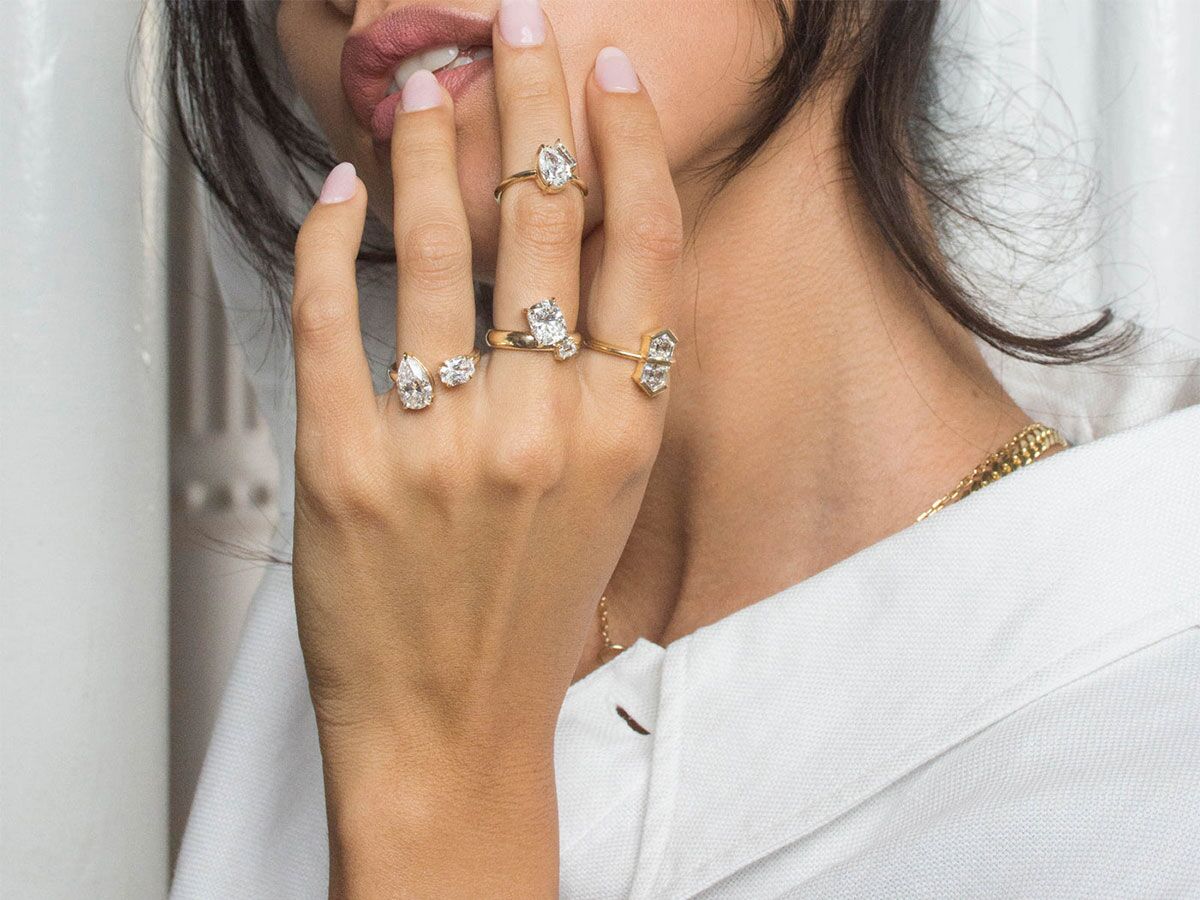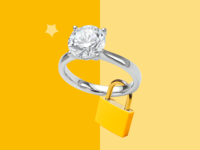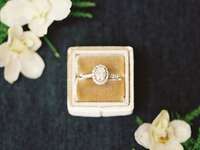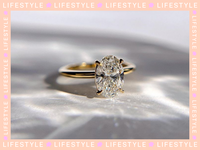White Gold vs. Silver: An Expert Explains the Difference
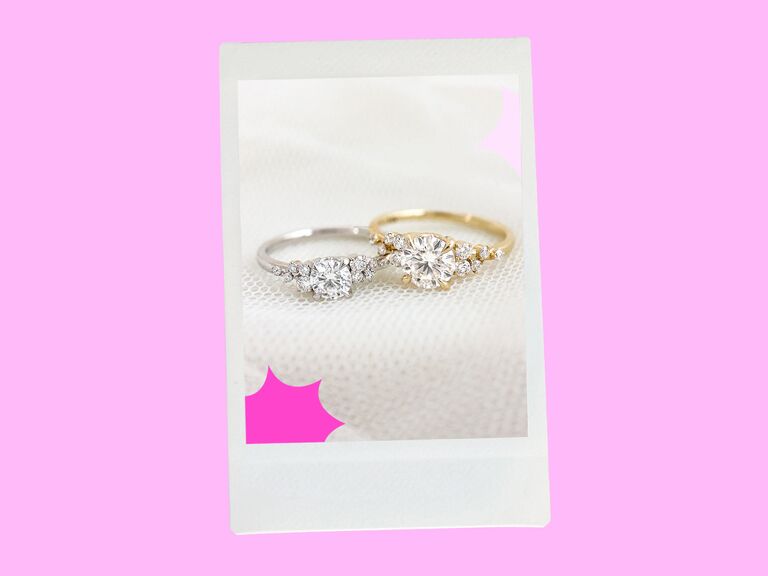
There are seemingly endless options when it comes to choosing an engagement ring. From diamond shapes to engagement ring metal types, it can be hard to narrow down your search. If you're a silver jewelry person, you'll want to know the differences between white gold versus silver before you start shopping for an engagement ring. Though they may appear similar on the surface, there are some key differences that set white gold and sterling silver apart. Below, we spoke with Michelle Berlinger, designer and owner of Berlinger, for her expert insight on white gold versus sterling silver, including which is the better choice for an engagement ring.
In this article:
- Sterling Silver vs. White Gold: The Main Differences
- Sterling Silver vs. White Gold: Can You See the Difference?
- Sterling Silver vs. White Gold: Which is Best for Engagement Rings?
Sterling Silver vs. White Gold: The Main Differences
Knowing the basics of silver versus white gold is a great place to start your engagement ring search. While these metals have pros and cons, understanding both will help you decide which is best for you and your needs.
Composition
Though they are similar in appearance, silver and white gold are made of different materials that give them different properties. "White gold is a mixture of pure gold (which is yellow) with other alloys like nickel, platinum and palladium to make it white," Berlinger explains. "Silver is a pure alloy, completely separate from gold." Sterling silver, however, is an alloy made of silver and other metals, typically copper. Both sterling silver and white gold are great choices if you have a metal allergy because they are both naturally hypoallergenic (unless they are alloyed with nickel).
"Sterling silver will always be stamped 925. This is the most common form of silver used in jewelry—it's an alloy of 92.5% silver and 7.5% other metals, typically copper. Pure silver, also known as fine silver, is 99.9% pure silver and is much softer."
Price
When it comes to white gold versus sterling silver price, white gold is much more expensive than sterling silver because it contains gold, which is a more precious metal. Other properties, including the appearance and durability, contribute to the higher price point of white gold. Unlike white gold, silver is abundant in nature and has a simple manufacturing process to produce jewelry, making it a much more affordable metal.
Durability
The biggest difference between white gold and sterling silver comes down to durability. While sterling silver will inevitably tarnish over time, white gold generally stands the test of time and requires very little upkeep. Pro tip: Whether your jewelry is sterling silver or white gold, we recommend you clean your sparkler at home from time to time.
"Silver is a much softer metal than gold and will tarnish very easily over time, turning black," Berlinger shares. "It can also turn black when exposed to certain substances (like chlorine or bromine in a pool). White gold will not tarnish over time, is significantly more durable over time for jewelry purposes, and there is little to no upkeep required."
Color
Though similar, there are some visible differences between sterling silver versus white gold color. While both have a shiny metallic appearance, there are subtle color differences that change the metal's overall aesthetic. "Silver will have more blue/dark black undertones. White gold will always be a brighter white color," Berlinger says.
Sterling Silver vs. White Gold: Can You See the Difference?
Yes, there is a visible difference between sterling silver and white gold. While the two metals are similar, the trained eye can see subtle differences in the color, texture and shine between a white gold and sterling silver engagement ring.
White gold typically has a high-shine, mirror-like appearance, while silver is a bit darker and duller—think nineties grunge-inspired silver jewelry. The rhodium plating in white gold is what gives it its sheen. Though durable, white gold requires occasional replating to maintain its appearance and keep it from turning yellow.
The actual color of the metal can also differentiate the two. White gold—as the name suggests—has a bright white color that can skew slightly cream or yellow in tone over time. Sterling silver, on the other hand, can lean towards blue, gray or black undertones.
Sterling Silver vs. White Gold: Which is Best for Engagement Rings?
"Without a doubt, always go for white gold," Berlinger urges. While white gold is more expensive than sterling silver, the higher price point comes with stronger durability and less maintenance over time. We recommend splurging on white gold if you have the means to ensure your ring looks its best for years to come. Engagement ring trends come and go, but it's important that you invest in a durable ring that will stand the test of time—and avoid having a scratched engagement ring if you can help it. You will likely wear your engagement ring every day, so it's worth investing in a high-quality metal so that you won't have to worry about meticulous upkeep.
"The short answer is that sterling silver does not hold up over time. If you have the option, I never recommend purchasing an engagement ring in silver," Berlinger advises. "Silver is best for fashion jewelry that is not sentimental because it tarnishes/breaks easily with everyday wear. White gold, on the other hand, is a perfect metal for everyday wear and for engagement or sentimental jewelry because its hardness can withstand the test of time."

